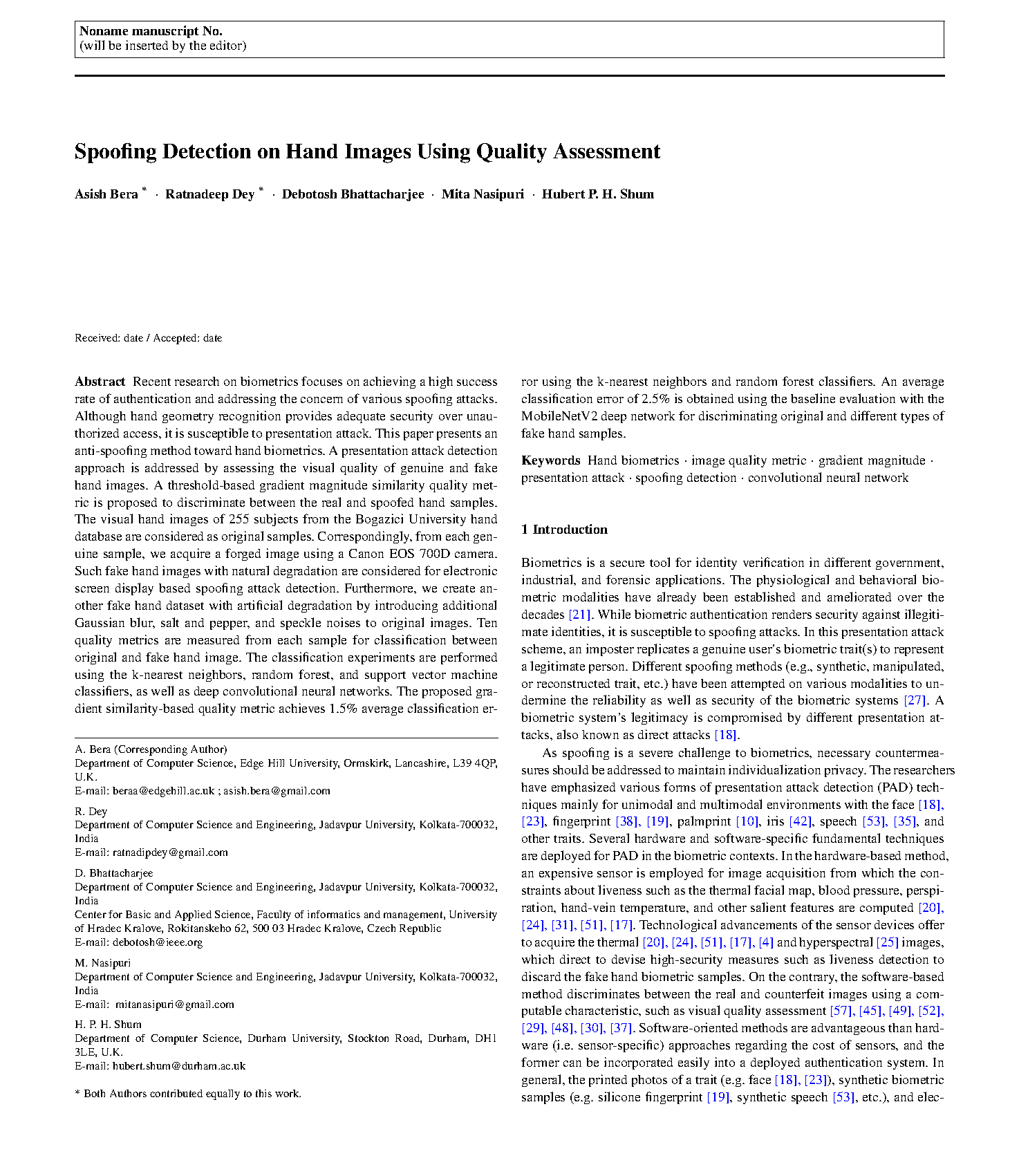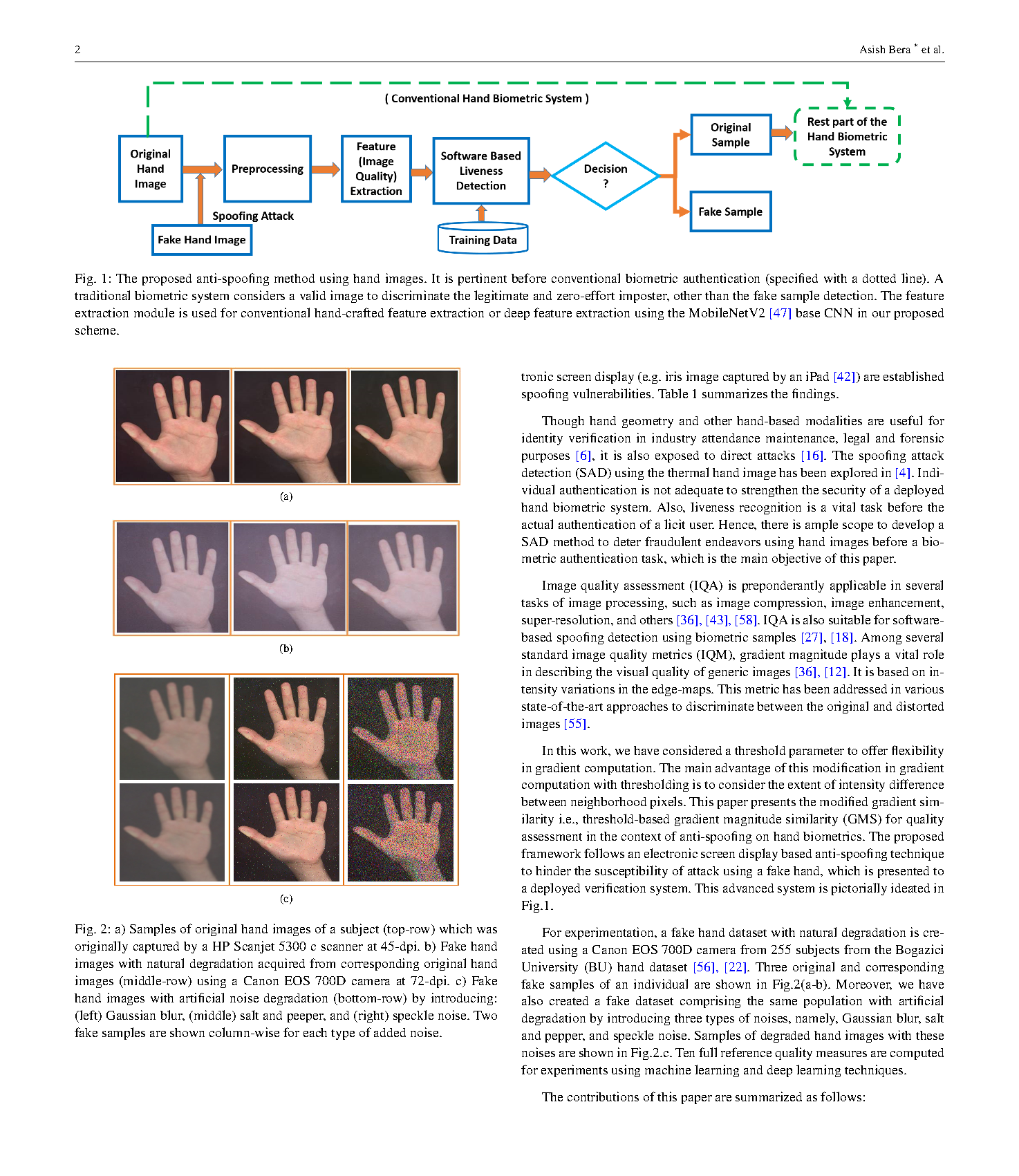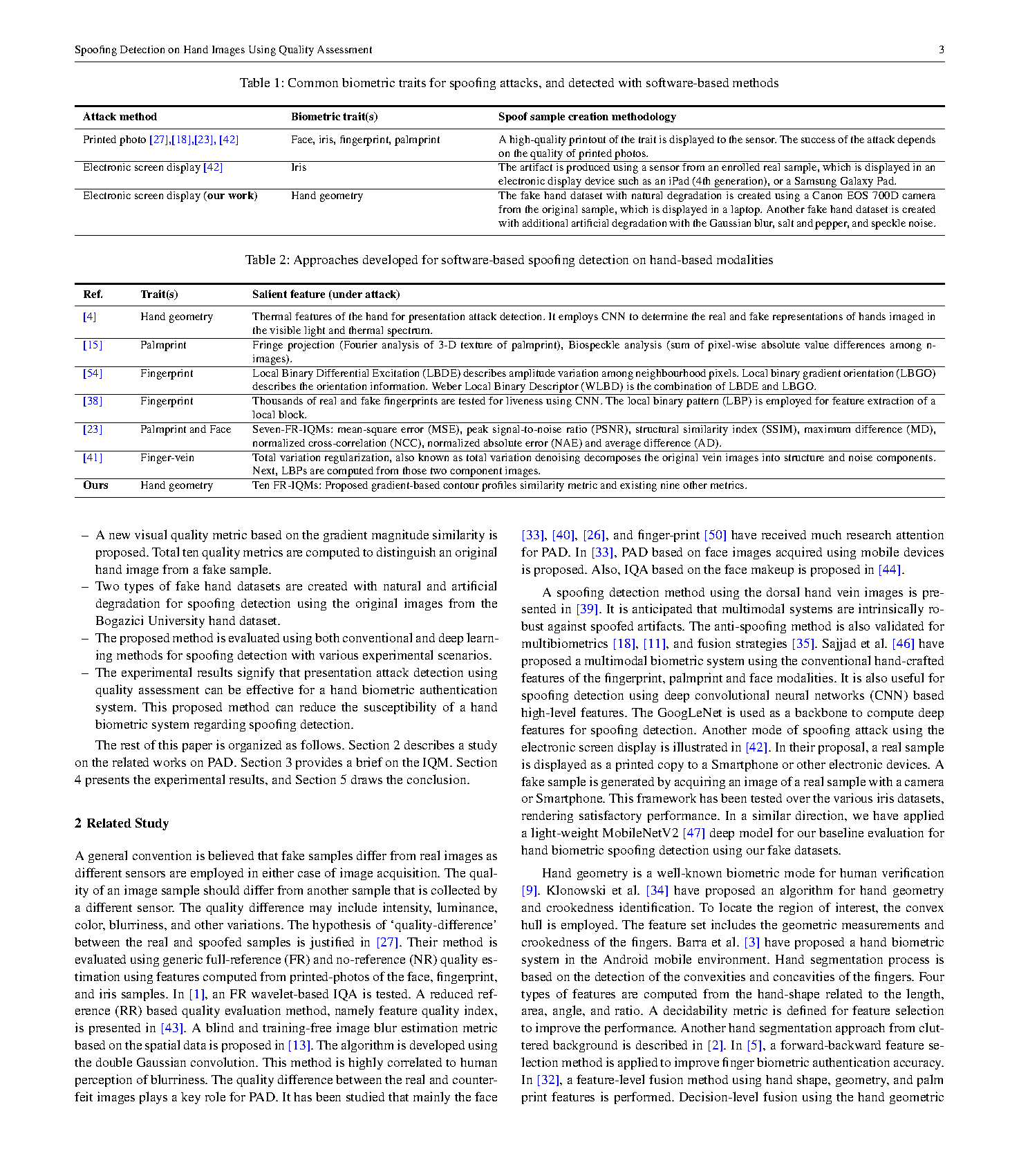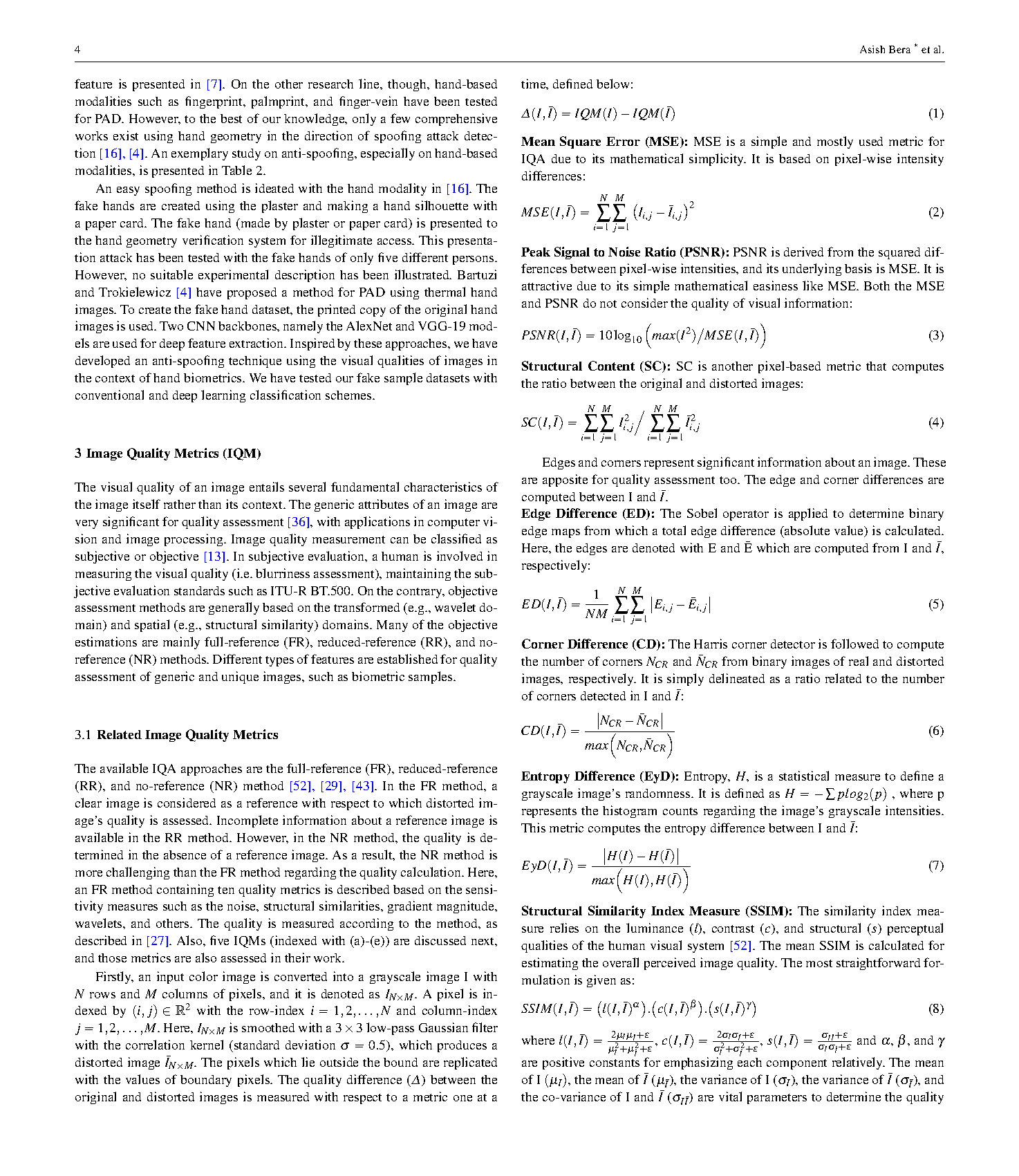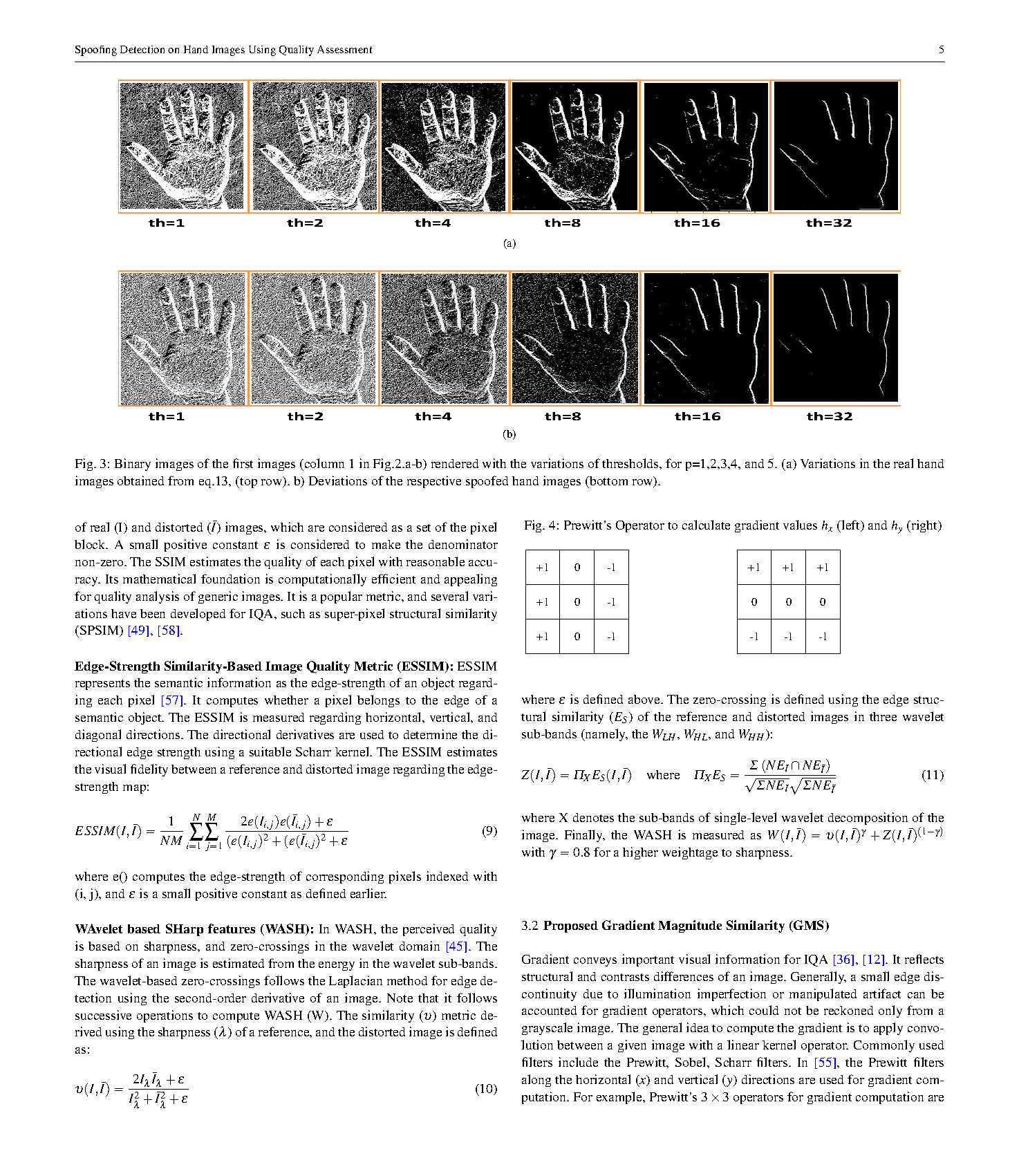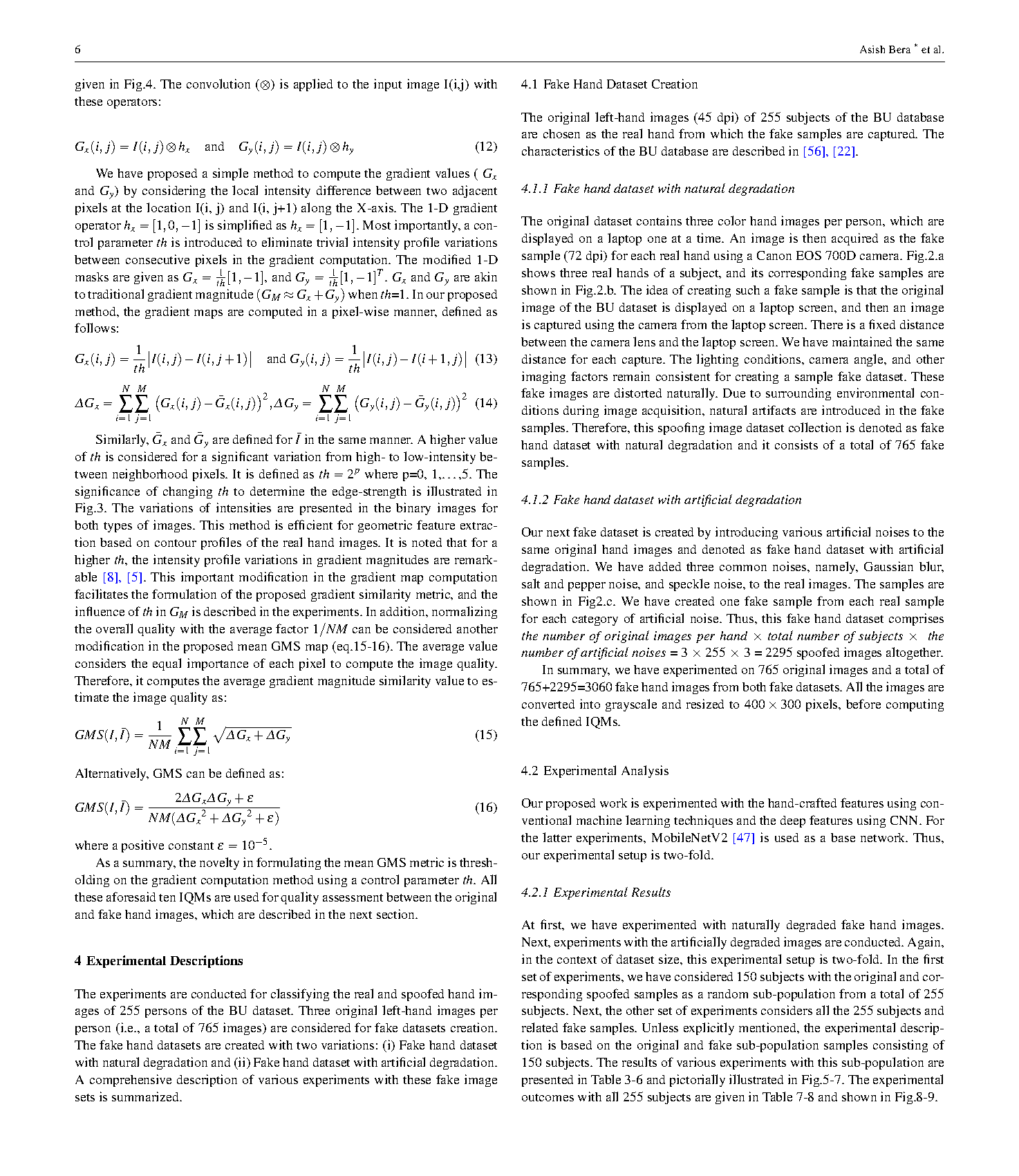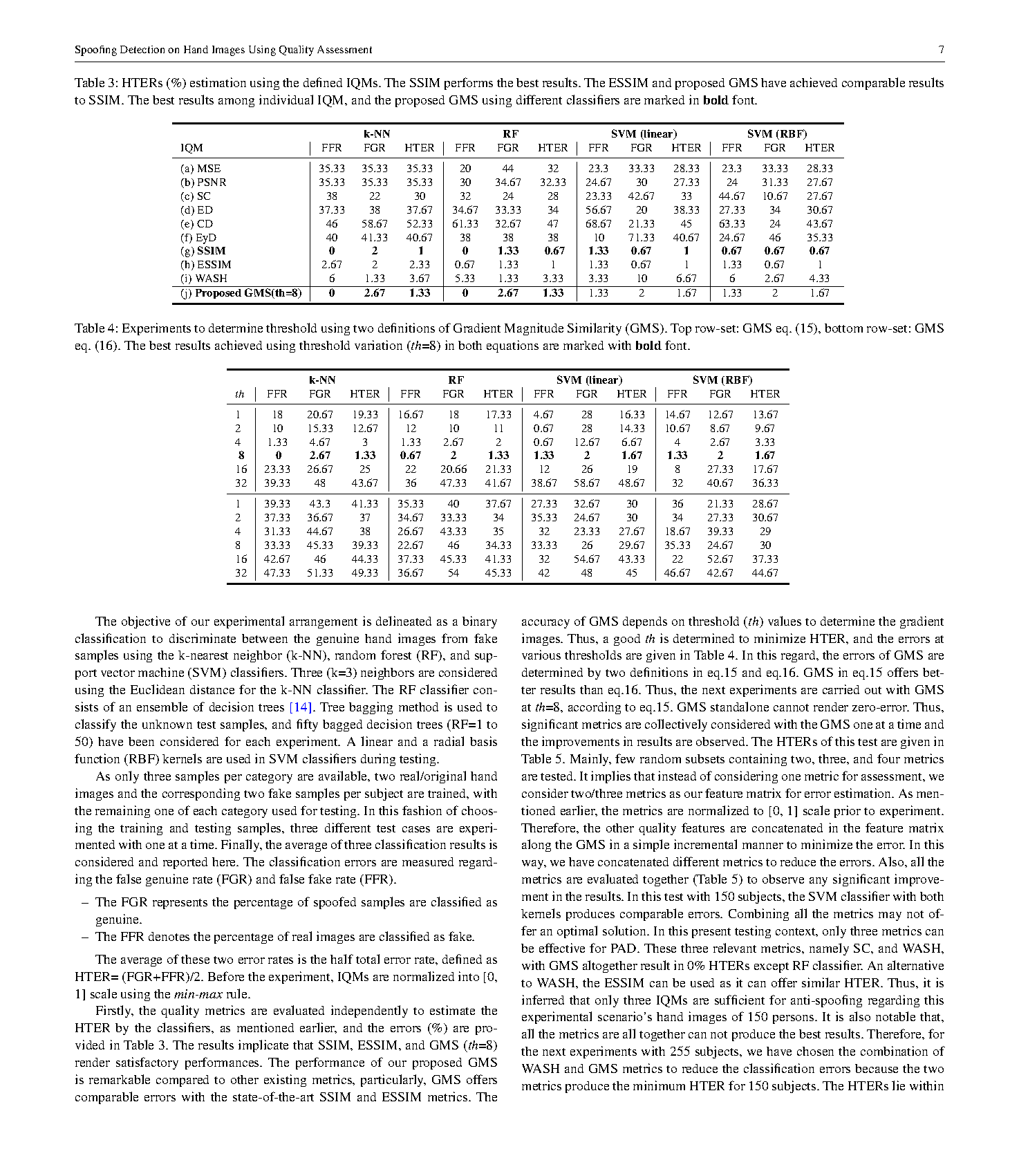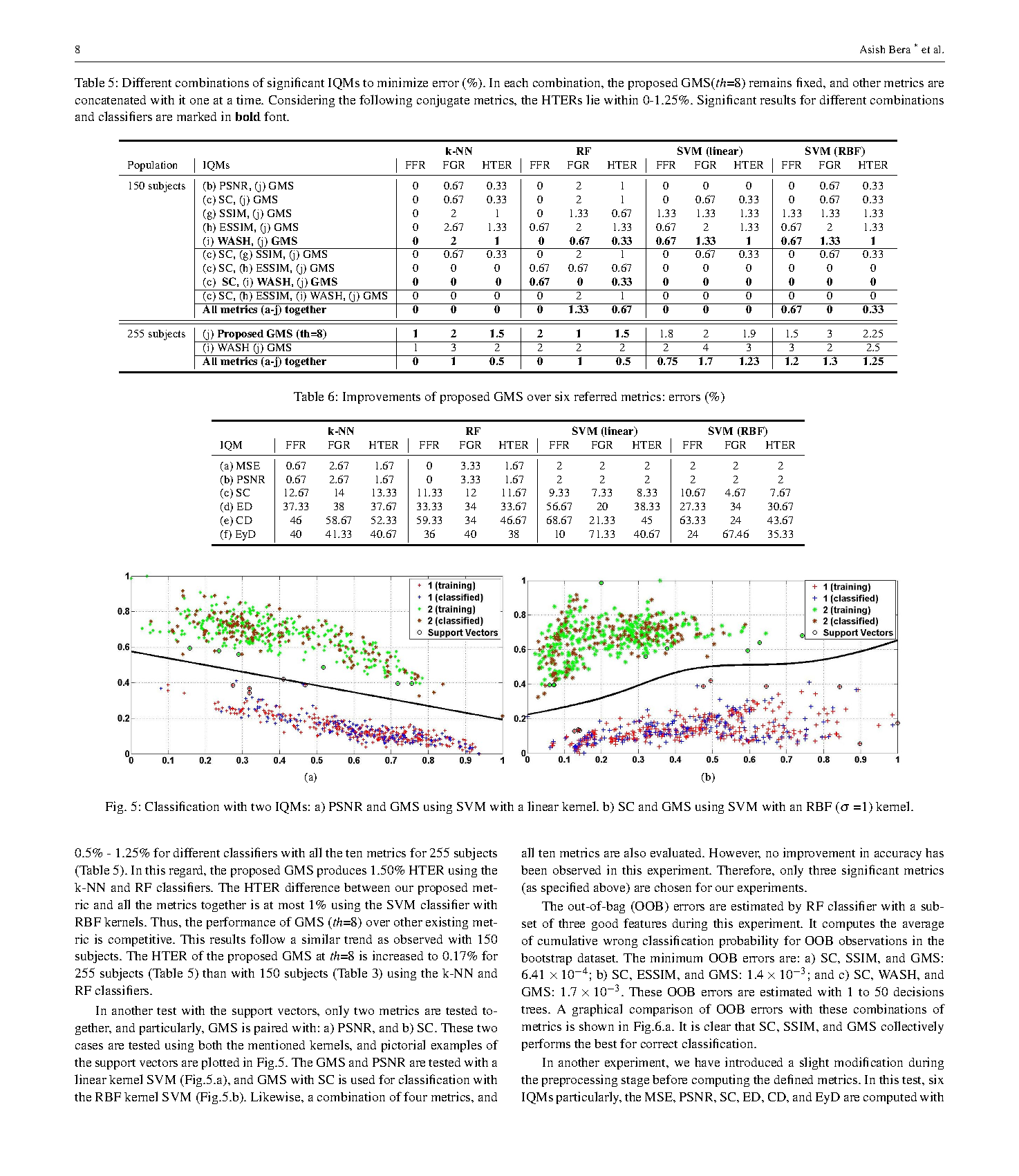Spoofing Detection on Hand Images Using Quality Assessment

Abstract
Recent research on biometrics focuses on achieving a high success rate of authentication and addressing the concern of various spoofing attacks. Although hand geometry recognition provides adequate security over unauthorized access, it is susceptible to presentation attack. This paper presents an anti-spoofing method toward hand biometrics. A presentation attack detection approach is addressed by assessing the visual quality of genuine and fake hand images. A threshold-based gradient magnitude similarity quality metric is proposed to discriminate between the real and spoofed hand samples. The visual hand images of 255 subjects from the Bogazici University hand database are considered as original samples. Correspondingly, from each genuine sample, we acquire a forged image using a Canon EOS 700D camera. Such fake hand images with natural degradation are considered for electronic screen display based spoofing attack detection. Furthermore, we create another fake hand dataset with artificial degradation by introducing additional Gaussian blur, salt and pepper, and speckle noises to original images. Ten quality metrics are measured from each sample for classification between original and fake hand image. The classification experiments are performed using the k-nearest neighbors, random forest, and support vector machine classifiers, as well as deep convolutional neural networks. The proposed gradient similarity-based quality metric achieves 1.5% average classification error using the k-nearest neighbors and random forest classifiers. An average classification error of 2.5% is obtained using the baseline evaluation with the MobileNetV2 deep network for discriminating original and different types of fake hand samples.
Publication
Spoofing Detection on Hand Images Using Quality Assessment by He Wang, Edmond S. L. Ho, Hubert P. H. Shum and Zhanxing Zhu in 2023
Multimedia Tools and Applications (MTAP)
Links and Downloads
